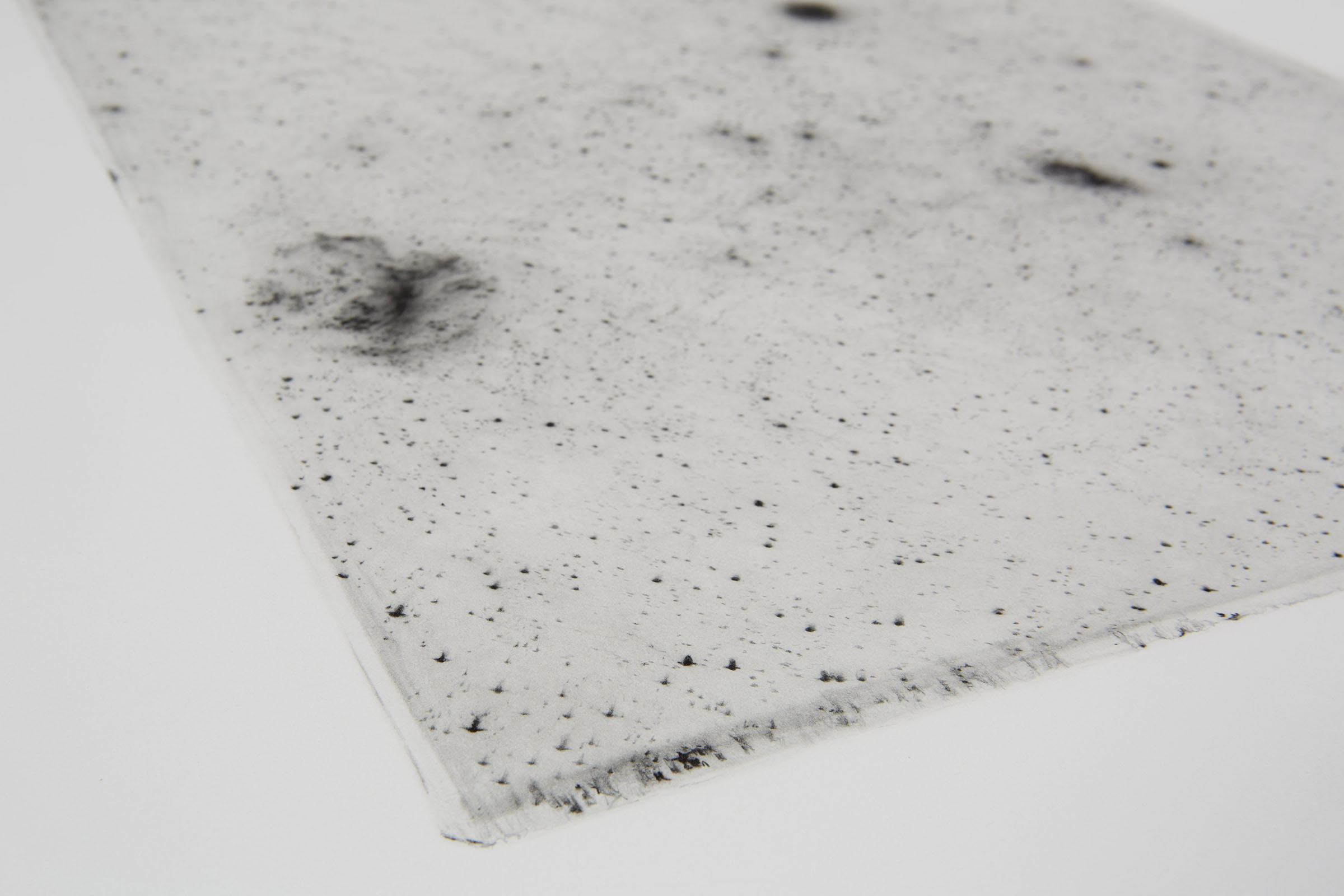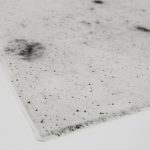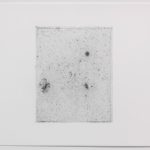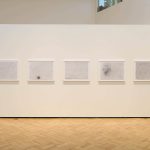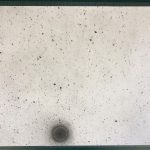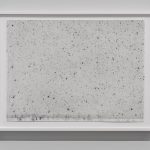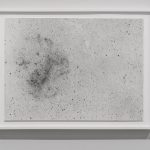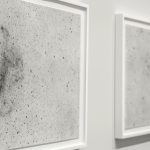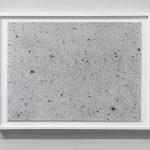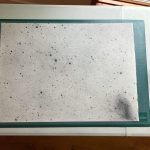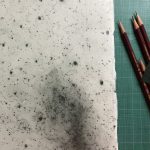This drawing series is an extension of my 2018-2019 project Measure at the Radcliffe Institute. Measure focused on the life and work of astronomer Henrietta Leavitt. As part of my project I examined the glass plate collection at the Harvard College Observatory.
In these drawings I look at plate AX3309 that includes the Small and Large Magellanic Clouds and the bright star Achernar. This photographic negative was captured in 1934 at a time when—thanks to Henrietta Leavitt’s findings—scientists had established a way to measure the distance to stars. These objects could be imagined three-dimensionally in space. During Leavitt’s lifetime (1868-1921), this photograph remained two-dimensional, a field of black dots. Plate AX3309—encompassing the Magellanic Clouds that Leavitt studied so intensely throughout her career—for me represents this mental shift from two to three dimensions, from the unknown to the known, from one individual’s desk to the expanse of the infinite.
That is what first captivated me about plate AX3309. But so also did a byproduct of the technology itself: starlight hitting the emulsion was warped by the telescope’s lens, particularly at the edges of the plate, producing poetic artifacts. The specificity of each star’s shape became its own marvel. To highlight this phenomenon, after first making a drawing of the overall photographic plate, I then enlarged areas of the original plate and drew each magnified section across the entire surface of the paper.
The surface populates with apparent moths, dragonflies, and birds taking flight, as the stars appear to slip away from the plate’s center. Each one becomes an individual. The specificity of each shape is captivating, and echoes what I learned from Henrietta Leavitt: to pay attention is enough.
